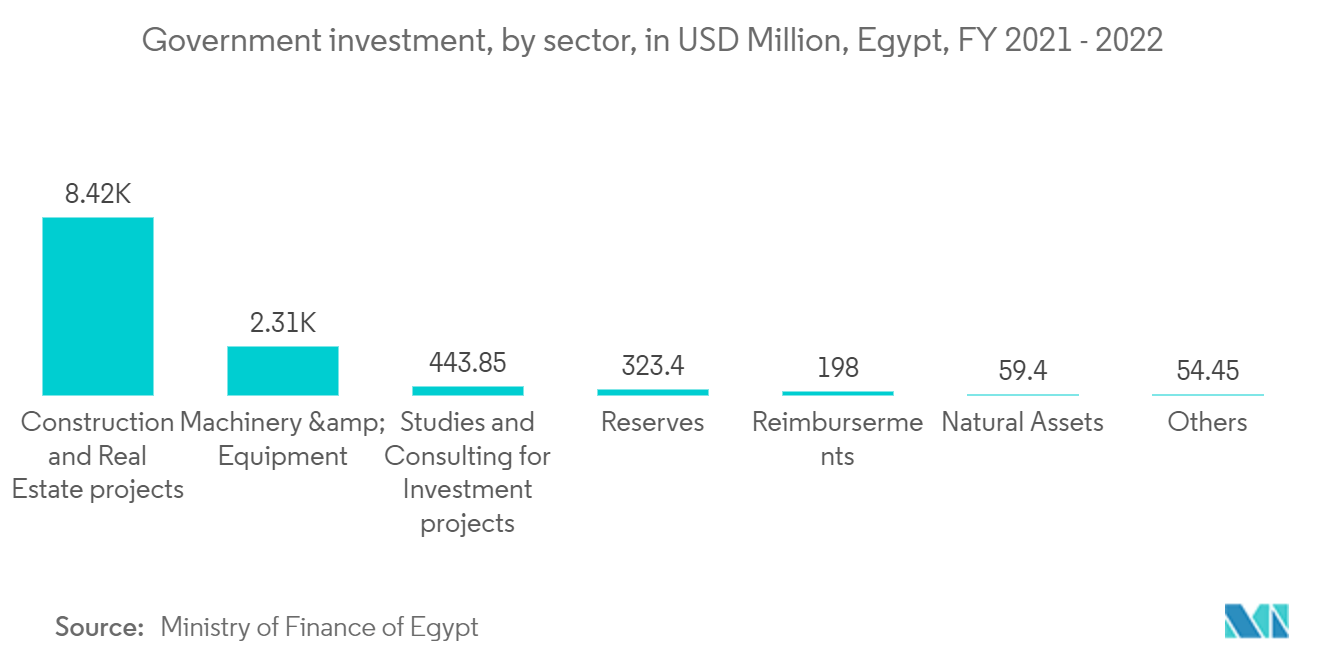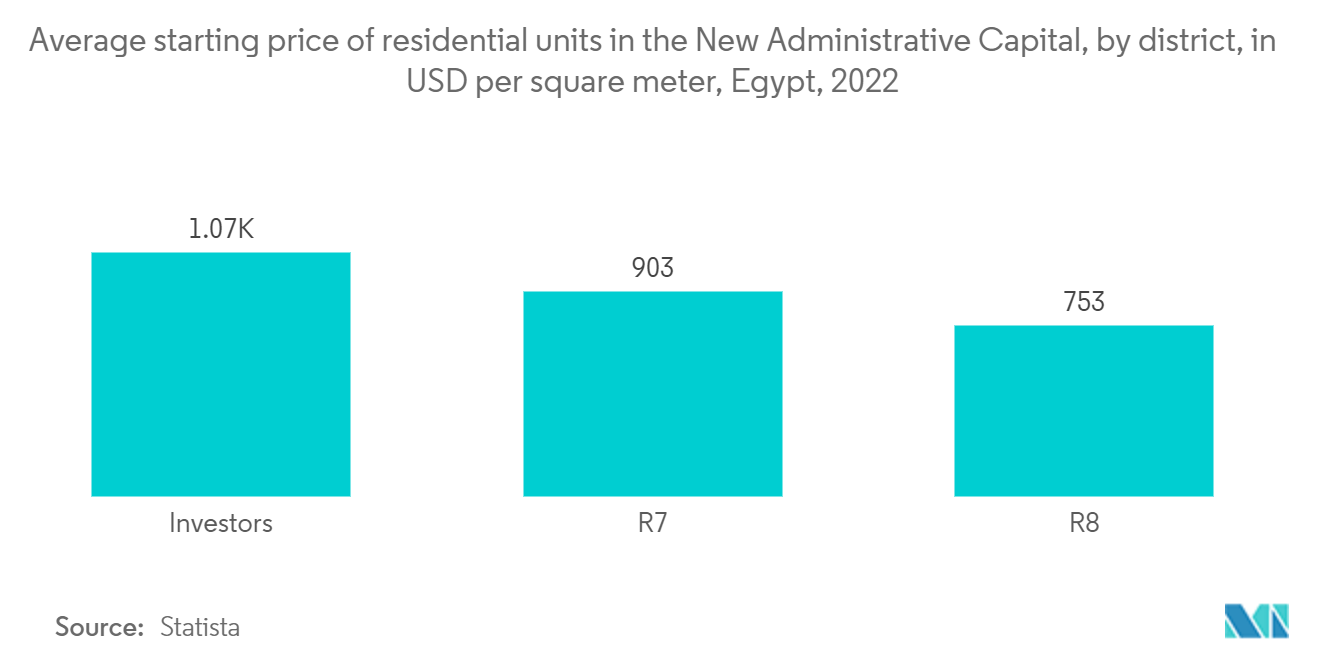Market Trends of Egypt Residential Construction Industry
Government Investment and Initiatives in the Residential Sector is Supporting the Market
In December 2022, Egypt's Urban Development Fund (UDF) began a nationwide massive urban housing project of EGP 600 billion (USD 20.11 Billion). The project entails building 230 urban areas in governorate capitals and important cities around the nation, totaling more than 14,422 acres. Thirty-five sites totaling 1,750 acres would be developed urgently, 60 sites totaling 2,600 acres would be developed on a priority basis, and the other 135 sites totaling 10,149 acres would be developed on a second priority basis. The whole project would be completed in five years.
In December 2022, the government completed by 83%. A project aimed at introducing more residential units in governorate capitals, with 1,272 units created in Upper Egypt at the cost of EGP 1.3 billion (USD 440 Million). In addition, a slum neighborhood known as "Al Dresa and Samakin" in Sohag is built by constructing 4,940 alternative-housing units in the exact location.
Also, Egypt's National Social Housing Program seeks to make it simpler for low-income families to own their own houses, giving better stability and aiding in the poverty cycle breakup. However, a lesser-known advantage of the program is that it addresses climate change by promoting energy-efficient and ecologically friendly building methods. The Social Homes Program (formerly known as "Housing For All"), which aims to provide low-income households with affordable housing, is no exception. It is Egypt's first national green building effort and the region's first green social housing initiative. The program implements the Green Pyramid Rating System (GPRS), which scores at least seven areas when a building is erected.

Relocation Of Egypt's Capital Increased Demand For Housing
The new city would be 45 km from the existing capital. The statement surprised Egyptians and others worldwide because Cairo is not only the Arab world's largest metropolis but also a critical cultural and historical landmark. It is also one of the world's most popular tourist sites. Thus it is usually buzzing with visitors. According to the Egyptian government, Cairo became congested, and a "new administrative capital" was a way to relieve pressure in the city. According to the plan, the new city will be established in an underdeveloped part of the Cairo Governorate and will serve as Egypt's administrative and financial capital.
The government intends to close Cairo's overcrowded and destitute slums by 2030 by relocating people's inexpensive housing to the new metropolis. The administration stated they intended to build a new parliament and presidential palace in the new city and many residential zones to accommodate Cairo's population. Around 5,000 of the 20,000 dwelling units were sold in the first residential district. The finished city is expected to house at least 6 million residents, its second and third phases primarily residential.


